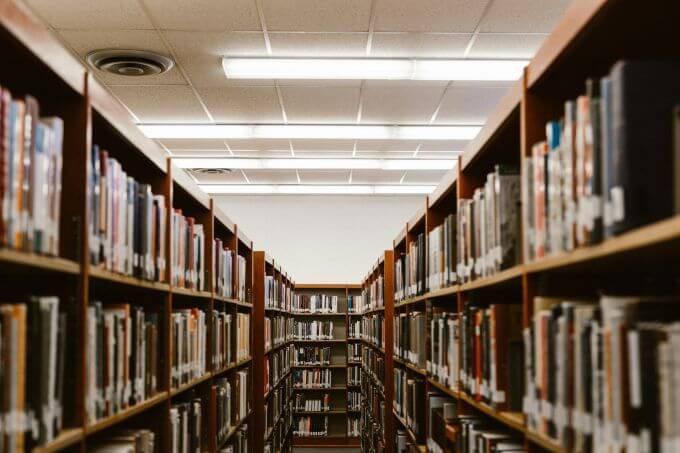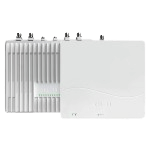How Schools Can Meet Alyssa's Law and Strengthen Emergency Response
Alyssa's Law Requires Fast Alerts. A Cellular Booster Ensures They Get Through
When there's an emergency at school, every second matters. That's the driving force behind Alyssa's Law: a mandate requiring schools to install silent panic buttons that connect directly to law enforcement. The goal is simple: faster emergency response and safer campuses.
Named in memory of Alyssa Alhadeff, a 14-year-old student who lost her life in the 2018 Marjory Stoneman Douglas High School shooting, the law continues to gain traction across the country.
But legislation alone isn't enough. Panic buttons are only as effective as the systems that power them. Reliable cellular coverage is essential to ensure that panic button signals reach first responders, no matter where they're triggered on campus.
Take advantage of our system design and installation services. Learn more or call us for a free consultation: 1-800-969-8189.
Panic Buttons Only Work if the Signal Does
Silent panic buttons come in many forms. Some connect over Wi-Fi, while others run on wired networks, Bluetooth, LoRa WAN, or cellular.
For many schools, the cellular options are especially appealing because they offer flexibility. These networks can serve as the main line of communication during emergencies, or provide a reliable backup if internet or power goes down.
Of course, for cellular-based systems to work reliably, schools need strong signal coverage throughout the building, a condition that isn't always guaranteed. Wondering whether your building has strong enough coverage? Here are a few signs that signal issues might be getting in the way.
Signal Check: What to Watch For
- Dropped calls or "No Service" zones in hallways, classrooms, or stairwells
- Texts that won't send unless you're near a window or a main door
- Slow-loading pages or frozen apps on mobile data
- Emergency alert systems don't work consistently across the building
If any of these sound familiar, a commercial signal booster could make a major difference.
What's Blocking the Signal? Why Cell Coverage Fails in Schools

Struggling with weak signal in parts of your school? There are a few common reasons why coverage might be falling short.
- Building materials like concrete, metal, and UV-protected glass can block signal from entering the building
- Layout and design can create dead zones in places like stairwells, basements, and interior classrooms.
- Network congestion during emergencies can overwhelm local towers, leading to dropped calls or failed alerts.
Want to dig deeper? Check out our full guide on why cell signals weaken in buildings like schools or large campuses.
Why Signal Matters
When seconds count, a weak or inconsistent signal can quietly undermine even the best emergency plans. It can delay alerts, disrupt communication, or limit which tools your school can confidently rely on. Strengthening your signal helps ensure every system, from panic buttons to mobile devices, can perform when it matters most.
In short, a strong cellular signal isn't a luxury—it's a safety essential. And without it, schools may find themselves limited in the types of emergency technologies they can rely on or forced to depend on backup systems that aren't as fast or secure.
Fortunately, there's a proven way to strengthen your signal and your safety plan.
The Solution: How FCC-Certified Cell Phone Signal Boosters Keep Schools Compliant and Safer
FCC-certified cell phone signal boosters amplify existing cellular signals and extend coverage throughout the school. These systems work to improve 4G and 5G reception across your entire campus, including hard-to-reach areas like stairwells, basements, and interior classrooms.
The result? Panic buttons and mobile devices stay connected when they're needed most. That means faster emergency alerts, more reliable communication between staff and responders, and fewer dropped connections during critical moments.
#1 Recommended Solution: Nextivity Cel-Fi QUATRA 4000c

Enterprise-grade booster for buildings with weak signal.
More DetailsIf you're looking for a reliable option for your school, consider the Nextivity Cel-Fi QUATRA 4000c, a scalable, enterprise-grade booster designed for buildings with weak or spotty signal.
It delivers industry-leading gain (up to 100 dB) and supports up to three major carriers simultaneously. This is critical for schools where staff, students, and law enforcement may use different networks.
Paired with the Cel-Fi Smart Server Antenna, the system becomes even more powerful, enabling seamless integration with panic buttons, environmental sensors, and gunshot detection systems. Plus, the QUATRA 4000c comes with remote monitoring and management, so your staff or admin team can keep an eye on system performance in real time.

How to Fund a Safer System
Ready to move forward with a solution but concerned about cost? You're not alone. The good news is that many states offer grants and safety funding specifically for Alyssa's Law compliance and school security upgrades. Whether through state-level safety grants or federal programs like the School Violence Prevention Program (SVPP), support is available to offset costs.
Working with a certified signal booster provider can also help identify eligible funding opportunities. From paperwork to installation, many offer guidance to help schools secure the right tools without stretching limited budgets.
Stronger Signals, Safer Schools
Creating safer school environments calls for more than just good intentions. It demands a strong system that works when every second counts. Alyssa's Law is a critical step toward faster response times, and cellular signals help ensure those systems never miss a beat.
Whether you're preparing for compliance or want to improve your school's emergency readiness, solutions like the Cel-Fi QUATRA 4000c provide the coverage and confidence you need. Plus, many schools qualify for funding and grants to support safety upgrades like this one.
Have questions? Our team is here to help. Contact us at 1-800-420-3211 a free consultation and learn how a stronger signal can lead to a safer school.
Interested in Learning More? Check Out Our Cellular Info Hub / WiFi Info Hub





